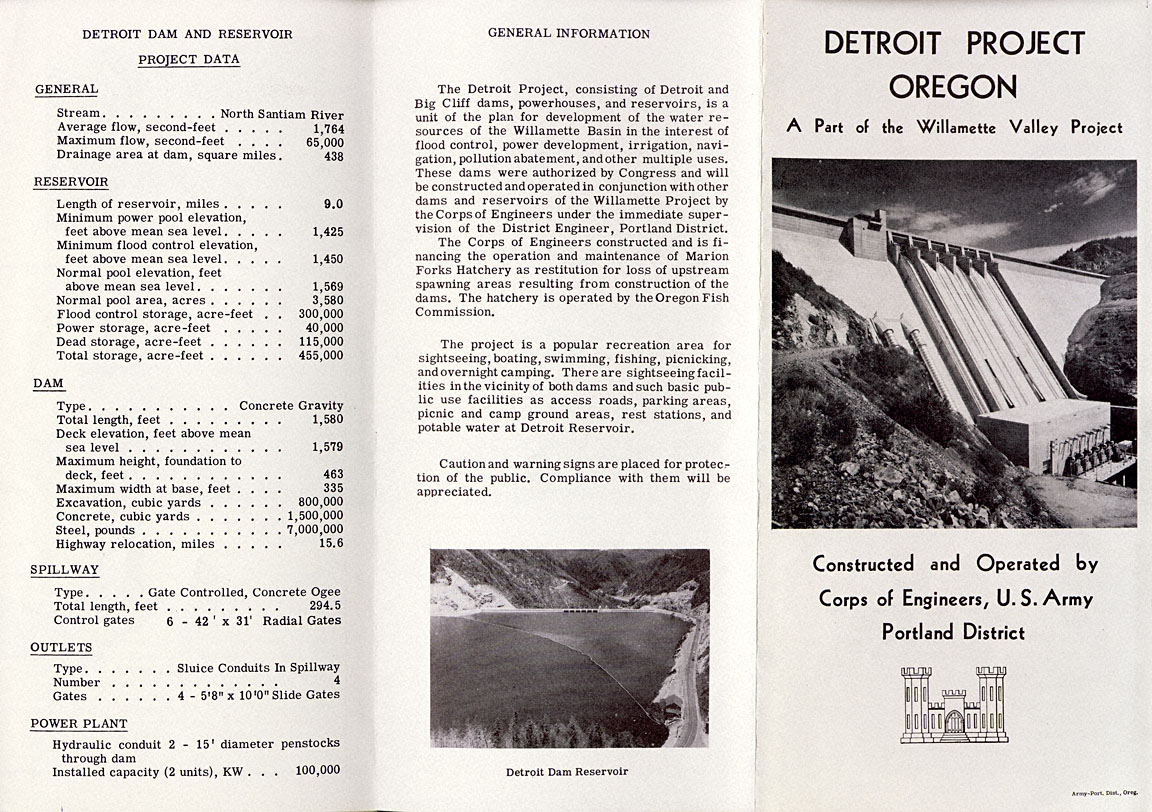- Catalog No. —
- OHS Vertical Files Dams-Santiam River
- Date —
- circa 1955-1960
- Era —
- 1950-1980 (New Economy, Civil Rights, and Environmentalism)
- Themes —
- Environment and Natural Resources, Government, Law, and Politics, Trade, Business, Industry, and the Economy
- Credits —
- Oregon Historical Society
- Regions —
- Willamette Basin
- Author —
- U.S. Army Corps of Engineers, Portland District
Detroit Project, Oregon
In the early 1930s, Willamette Valley business owners, residents, and politicians worked together to convince the federal government to develop a comprehensive plan for managing the Willamette River Basin. The U.S. Army Corps of Engineers (USACE) completed a survey and report in 1937 recommending a number of water storage dams on the Willamette River and its tributaries for flood control, navigation, irrigation, and power generation. Congress approved the Willamette Valley Project and the USACE finished the first of thirteen dams in the basin in the early 1940s.
The Detroit and Big Cliff Dams, finished in 1953, created two reservoir lakes that are used for recreation. Both of the Detroit Project dams, located on the North Santiam River, have power generating facilities. The dams do not have fish ladders, and as a result, native salmon and steelhead have been blocked from returning to their upriver spawning grounds.
One of the few opponents of Willamette Valley Project dams was William L. Finley, an Oregon naturalist and photographer. Finley argued that the dams would devastate fish and insect life in the rivers.
Further Reading:
Robbins, William G. “The Willamette Project of Oregon: A Study in the Political Economy of Water Resource Development,” Pacific Historical Review 47, 1978: 585-605.
Written by Kathy Tucker, © Oregon Historical Society, 2002.
